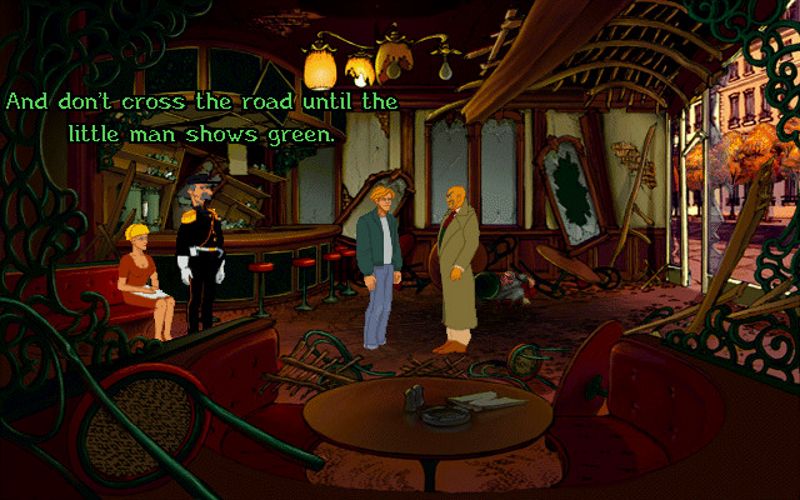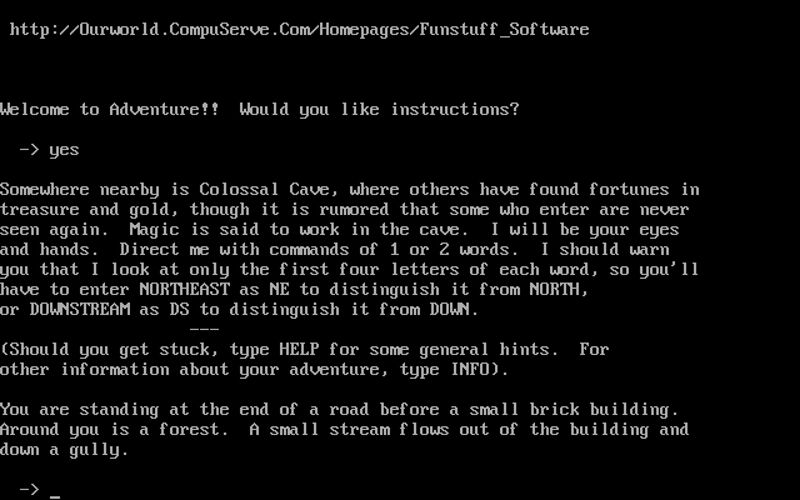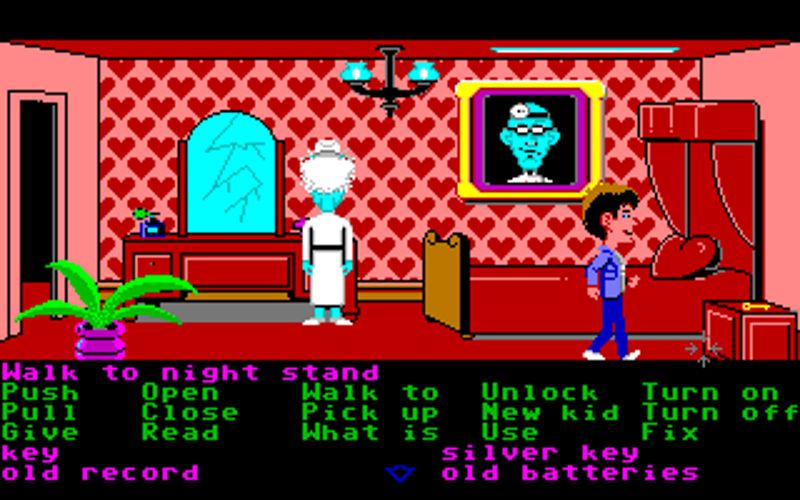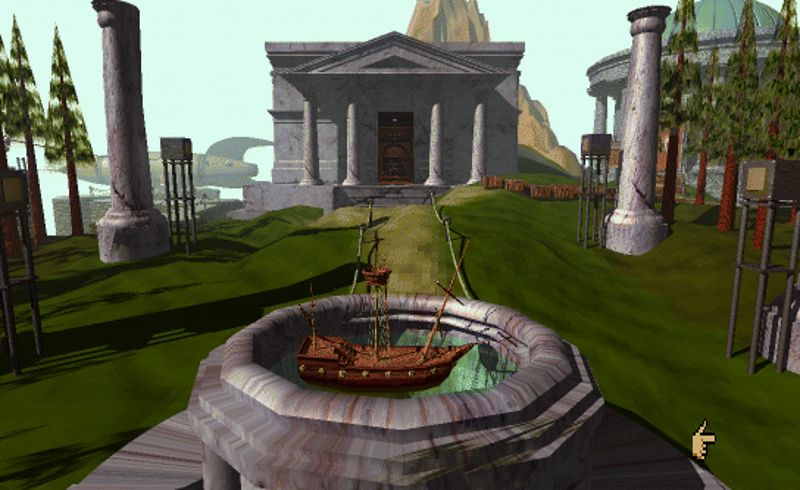If you hear the term "adventure games", you might think of video games like Tomb Raider and Uncharted; but those don't fit within the adventure game genre. Or perhaps it brings to mind the pixelated point-and-clicks of old like Monkey Island and Day of the Tentacle; these certainly are adventure games, but the genre is far broader.
So what exactly are adventure games? How has the genre developed over the years and what does the future hold for it? We're going to explain everything you need to know about adventure games.
The Definition of Adventure Games
In a way, it's hard to pin down a definition of an adventure game. You might get something different from everyone you ask.
As such, it's helpful to first understand what an adventure game isn't.
The adventure genre means something different in other mediums—of something swashbuckling and thrilling. Peter Pan is an adventure book and Indiana Jones is an adventure film, but the elements that make up these stories don't necessarily constitute an adventure game.

According to LiteraryTerms.net, adventures are defined as a "remarkable or unexpected journey, experience, or event that a person participates in as a result of chance."
"Also, adventures usually includes dangerous situations, narrow escapes, problems to be solved through intelligence and skill, exotic people and places, and brave deeds."
Many adventure games are about unexpected journeys experienced by chance, but that isn't the core of what makes them so. Plus, while problem solving is central, the pace is often leisurely. As such, while the literary definition of adventure is based on the topic, the game definition is based on the gameplay mechanics.
A strong definition of adventure games comes from Adventure Gamers, which boils it down to games that "focus on puzzle solving within a narrative framework, generally with few or no action elements."
Related: Cool Puzzle Games You Can Play Free in Your Browser
That means that games like Tomb Raider and Uncharted aren't adventure games. While they do contain puzzle solving, they are primarily action experiences. Equally, games like Tetris and Candy Crush are plenty puzzling, but they lack the narrative framework.
According to the Adventure Gamers definition, an adventure game always contains some degree of narrative, puzzles, and exploration.

With this definition, it means that games like The Secret of Monkey Island, Broken Sword, Gabriel Knight, Machinarium, The Walking Dead, Life is Strange, Oxenfree, and Firewatch are all adventure games.
The History of Adventure Games
The first adventure game ever released was Colossal Cave Adventure in 1976. In fact, it's considered the first example of interactive fiction.
The game was developed by Will Crowther, who combined his hobby of caving with his love of fantasy.

It's here that the text adventure was born, followed by the likes of Adventureland and Zork. The story was told purely through text on the screen, which the player could interact with through typing simple commands like "go north" and "get key."
Related: How to Make Your Own Text Adventure Games
In the 1980s, visual adventures were born. The first was Mystery House from Sierra On-Line, which still required text input but featured vector graphics.
As technology evolved, it allowed for the introduction of bitmap graphics and animations. 1984's King's Quest is a prime example of this.

As the decade progressed with the advent of computer mice, so came point-and-click adventures like 1987's Maniac Mansion. This game had no typing—instead, you click on the screen to move your character, and select verbs (like "pick up", "open", and "use") from the bottom of the screen.
Some of the genre's most influential and popular games came during this era and the early 90s; primarily, though not exclusively, from developers like LucasArts and Sierra. The Secret of Monkey Island, Leisure Suit Larry, Broken Sword, Sam & Max: Hit the Road, and Full Throttle are all examples of games that are adored by many to this day.
In fact, this point-and-click style continues to be the backbone of many modern adventure games. Though the interface has been refined, often removing the verb selector in favor of one-click-does-all, 2014's Broken Age and 2017's Thimbleweed Park both found large audiences.
But let's jump back. As the 90s progressed, and technology continued to improve, adventure games saw the addition of luxuries like voice acting, while others experimented with interactive video (known as FMVs.)

Some ventured to 3D gameplay. Released in 1993, Myst became one of the biggest and best-selling video games of all time. The game had a looser narrative and favored first-person exploration and puzzle solving, which 2016's The Witness was heavily inspired by.
As the 90s progressed, the popularity of adventure games fell. One of the main reasons for this was that home computers were able to handle more advanced gameplay, leading to smash-hit action titles like Doom.
Through the 2000s, adventure games lost popularity. This is perhaps best seen through the cancelation of Sam & Max: Freelance Police—an adventure game ditched halfway through production by LucasArts, once the pioneers of the genre.
While adventure games were still being created, primarily by European and indie developers, their audience was no longer what it once was.
What Are Modern Adventure Games?
In 2012, Double Fine, a studio helmed by adventure game veteran Tim Schafer, turned to Kickstarter to fund a classic point-and-click adventure game. The project raised $3.4 million and became the largest Kickstarter campaign up to that point.
The game released in two parts and featured high-profile voice actors like Elijah Wood and Jack Black. It was the catalyst for many other game developers seeking independent funding through Kickstarter.
While the game was received well, it didn't exactly lead to a revival of the high-profile point-and-click (apart from a few like Broken Sword: The Serpent's Curse.) Instead, the adventure game genre was evolving.
The genre grew to encompass choice-based narratives and walking simulators. The main proponent of this was Telltale Games' The Walking Dead, a five-part episodic series based in the universe of the comic book of the same name.
As a developer, Telltale had been vital in pushing digital episodic distribution through more traditional adventure games like Sam & Max: Save the World, but The Walking Dead took the focus off puzzles for a more cinematic experience. Players are forced to make difficult choices in dialogue and action, which has a ripple effect on the rest of the story.
This led to a boom in choice-based games that sold very well, like Life is Strange and Detroit: Become Human.
Walking simulators, as they are sometimes derogatively called, are also born from the traditional adventure. These are games like Gone Home and Firewatch, often presented from a first-person perspective, that favor a strong narrative experience with essentially no puzzles or challenge.
There's also the visual novel, which are very popular in Japan, though whether these sit within the adventure genre is debatable. Successful localized examples include the Phoenix Wright and Zero Escape series.
As for those more traditional point-and-click adventures? Many of them have found new audiences through remasters and rereleases (often on mobile platforms), like Day of the Tentacle, Monkey Island, and Grim Fandango. Plus, you can still play the oldies on your modern system thanks to the ScummVM virtual machine.
Adventure Games Continue to Thrive
Adventure games have been around since the dawn of gaming. Though the genre has evolved, moving from text to fully-fledged 3D experiences, it's unlikely to go away permanently.
People crave a good narrative; you can't beat a well-told story. And if there's one thing that adventure games do best, it's suck you into their fictional worlds and let your imagination soar.
